Ebubekir Memisoglu
A Novel Pilot Allocation Technique for Uplink OFDMA in ISAC Systems
Apr 02, 2025Abstract:In integrated sensing and communication (ISAC) systems, pilot signals play a crucial role in enhancing sensing performance due to their strong autocorrelation properties and high transmission power. However, conventional interleaved pilots inherently constrain the maximum unambiguous range and reduce the accuracy of channel impulse response (CIR) estimation compared to continuous orthogonal frequency-division multiple access (OFDMA) signals. To address this challenge, we propose a novel overlapped block-pilot structure for uplink OFDMA-based ISAC systems, called phase-shifted ISAC (PS-ISAC) pilot allocation. The proposed method leverages a cyclic prefix (CP)-based phase-shifted pilot design, enabling efficient multi-transmitter pilot separation at the receiver. Simulation results confirm that the proposed scheme enhances CIR separation, reduces computational complexity, and improves mean square error (MSE) performance under practical power constraints. Furthermore, we demonstrate that utilizing continuous pilot resources maximizes the unambiguous range.
Identification of Distorted RF Components via Deep Multi-Task Learning
Jul 04, 2022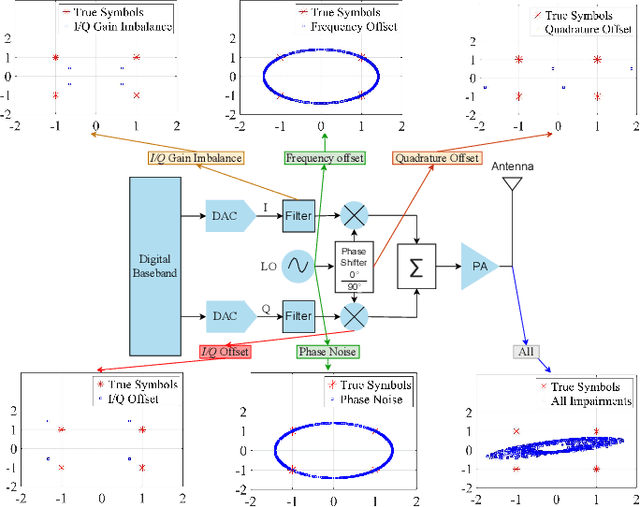
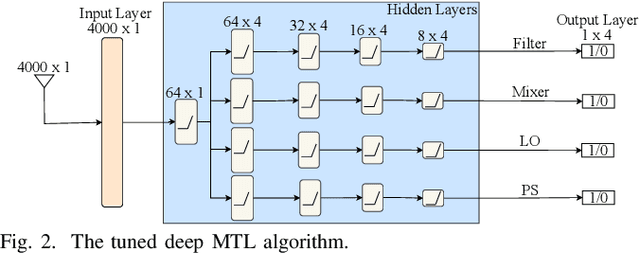
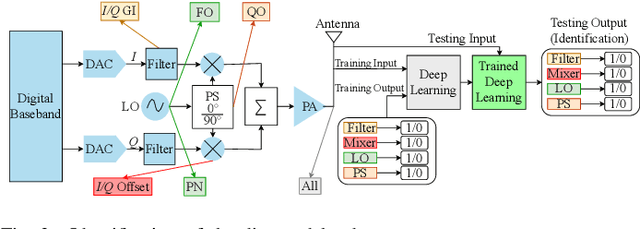
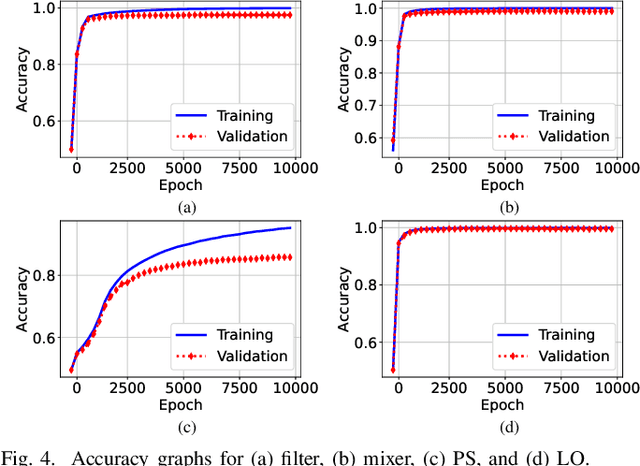
Abstract:High-quality radio frequency (RF) components are imperative for efficient wireless communication. However, these components can degrade over time and need to be identified so that either they can be replaced or their effects can be compensated. The identification of these components can be done through observation and analysis of constellation diagrams. However, in the presence of multiple distortions, it is very challenging to isolate and identify the RF components responsible for the degradation. This paper highlights the difficulties of distorted RF components' identification and their importance. Furthermore, a deep multi-task learning algorithm is proposed to identify the distorted components in the challenging scenario. Extensive simulations show that the proposed algorithm can automatically detect multiple distorted RF components with high accuracy in different scenarios.
Joint Estimation of Multiple RF Impairments Using Deep Multi-Task Learning
Sep 29, 2021

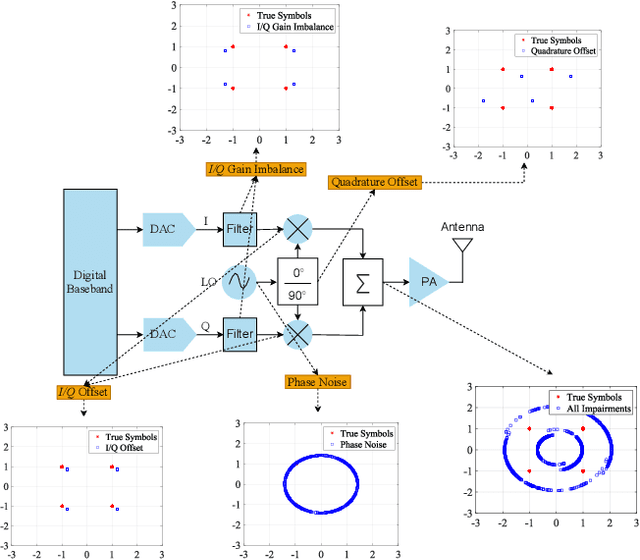
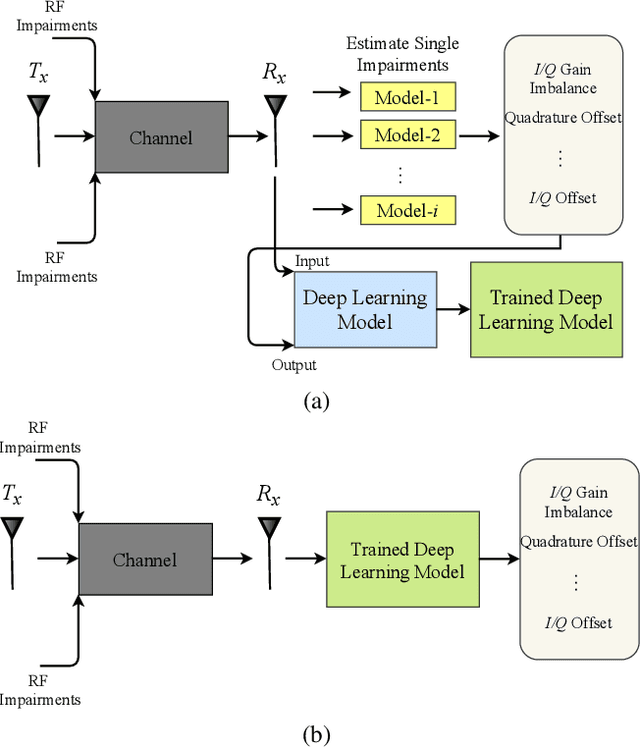
Abstract:Radio-frequency (RF) front-end forms a critical part of any radio system, defining its cost as well as communication performance. However, these components frequently exhibit non-ideal behavior, referred to as impairments, due to the imperfections in the manufacturing/design process. Most of the designers rely on simplified closed-form models to estimate these impairments. On the other hand, these models do not holistically or accurately capture the effects of real-world RF front-end components. Recently, machine learning-based algorithms have been proposed to estimate these impairments. However, these algorithms are not capable of estimating multiple RF impairments jointly, which leads to limited estimation accuracy. In this paper, the joint estimation of multiple RF impairments by exploiting the relationship between them is proposed. To do this, a deep multi-task learning-based algorithm is designed. Extensive simulation results reveal that the performance of the proposed joint RF impairments estimation algorithm is superior to the conventional individual estimations in terms of mean-square error. Moreover, the proposed algorithm removes the need of training multiple models for estimating the different impairments.
 Add to Chrome
Add to Chrome Add to Firefox
Add to Firefox Add to Edge
Add to Edge